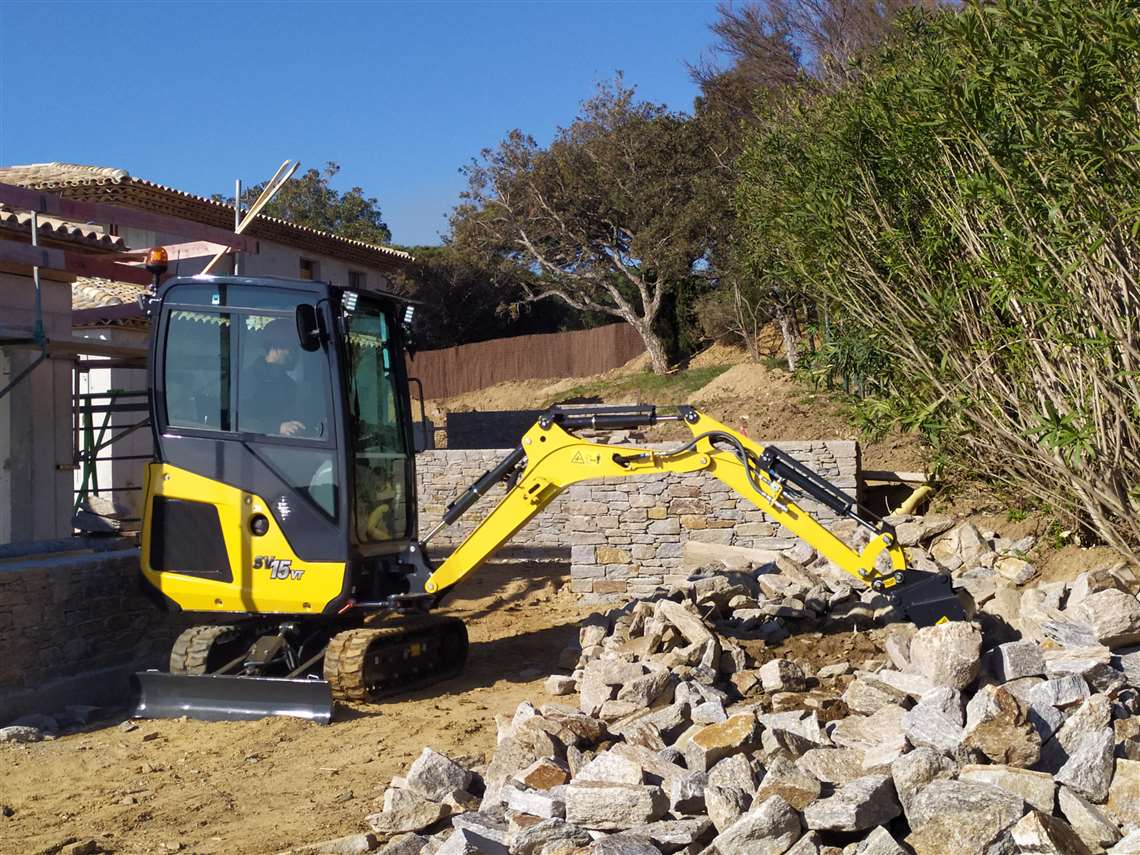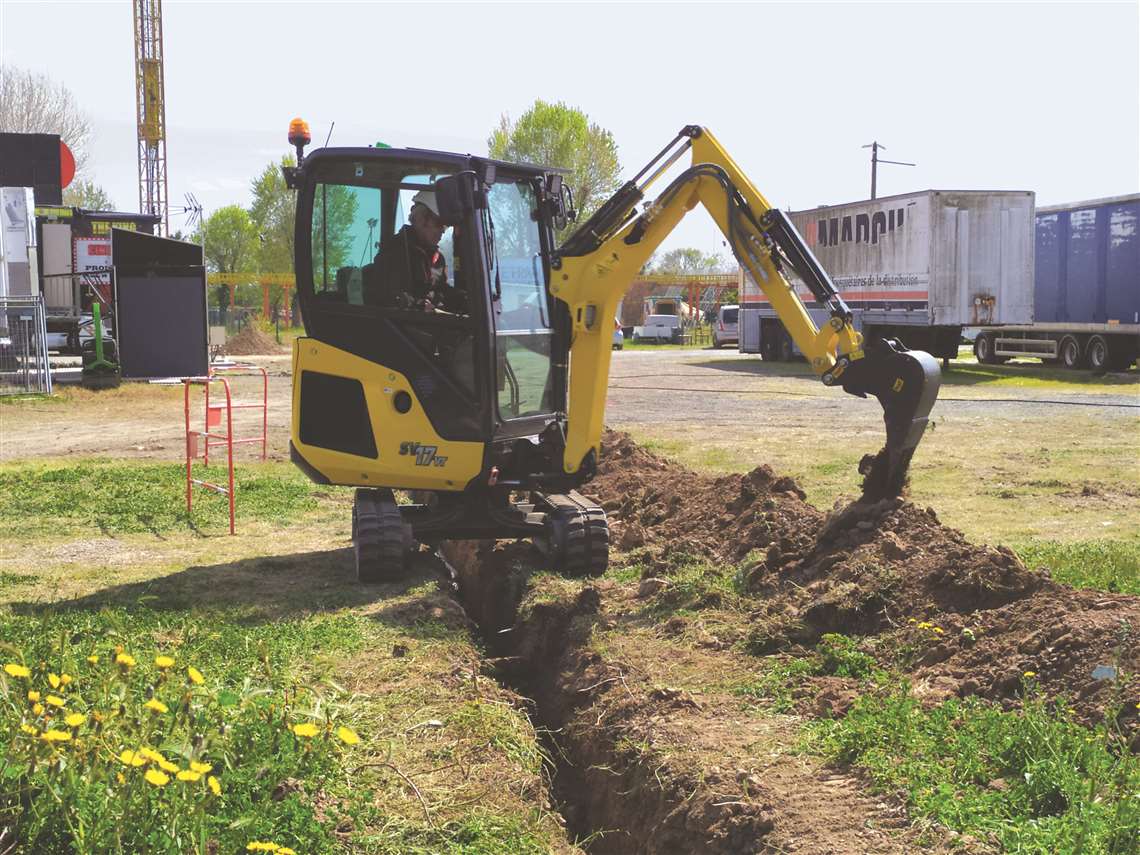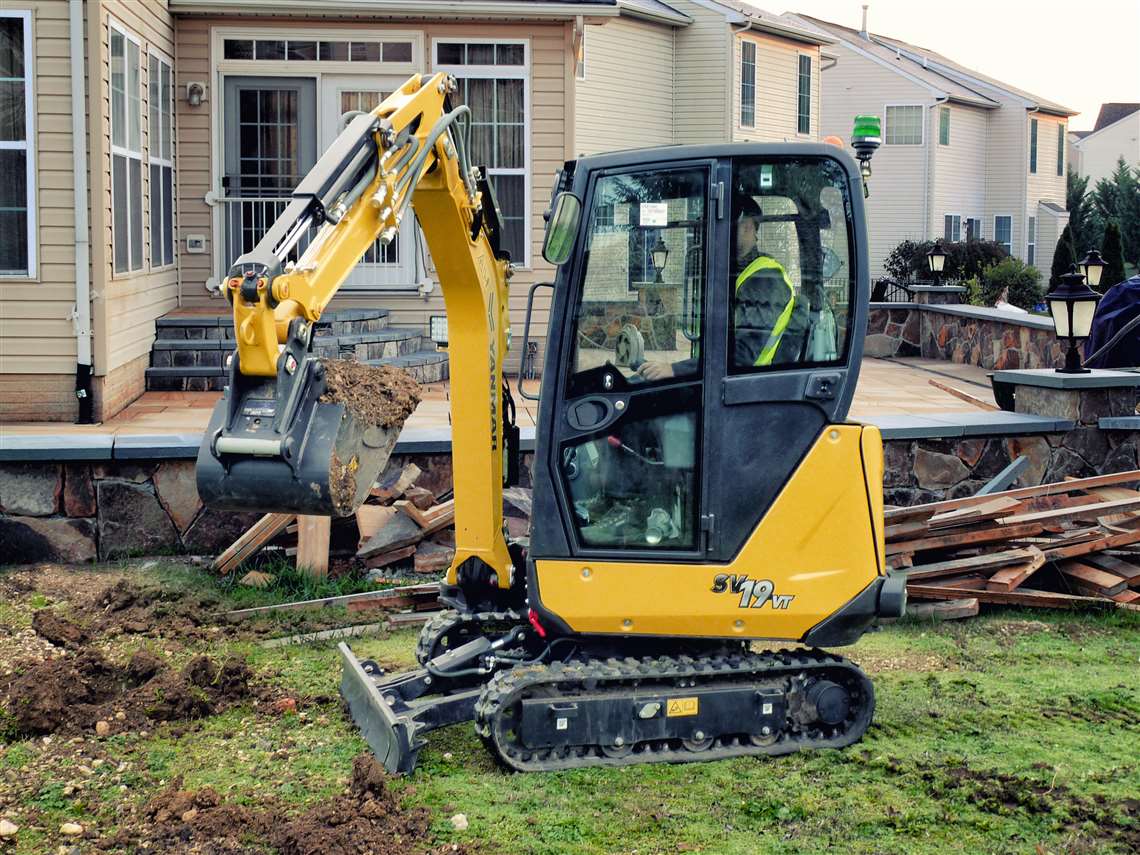Yanmar launches new SV mini excavator range
26 May 2021
Yanmar Compact Equipment EMEA has launched the first three models of its new Stage V compliant SV mini excavator range.
 Yanmar’s SV15VT mini excavator is the smallest of the company’s new SV range.
Yanmar’s SV15VT mini excavator is the smallest of the company’s new SV range.
The new SV15VT, SV17VT and SV19VT models, which are now available in Europe, were developed “from scratch” for use on urban construction projects.
Both the SV15Vt and SV17VT excavators are fitted with Yanmar’s 3-cylinder 3TNV70-PBVA engines, and the SV19VT uses a 3TNV70-QBVA engine with indirect injection, which provides more efficient fuel consumption and higher productivity for heavier tasks.
The SV15VT is the smallest of the new line, with a maximum operating weight of 1.6 tonnes. It has a short arm digging force of 7.4 kN and comes with an auxiliary hydraulic line for breaker and drill attachments.
The mini excavator model also features an extendable undercarriage. It offers widths from 980 mm to 1.17 metres and can be transported to and from construction sites using a standard 2.5 tonne tailer. The SV15VT’s chain frame has four tie-down points for lashing straps to ensure stability during transport.
 Yanmar SV17VT mini excavator
Yanmar SV17VT mini excavator
The slightly bigger SV17VT model offers a digging force of 16 kN and travel speeds of 2.4 and 4.8 kph. It also includes the manufacturer’s ViPPS hydraulic system, which ensures the machine’s movements are smooth and efficient.
For more demanding applications, the largest of Yanmar’s new models has been designed with simple operation in mind.
The SV19VT offers higher productivity and efficiency levels, which Yanmar said makes it well-suited for earthmoving and demolition applications.
In addition to long arm, short arm and blade configurations, the model’s undercarriage can be extended from 980mm up to 1.3 metres wide.
While the SV19VT is available with an optional 50kg counterweight, Yanmar said the large swivel range of the machine’s boom allows operators to further enlarge the working area for greater flexibility.
 The SV19VT mini excavator is suitable for a range of heavier applications including earthmoving.
The SV19VT mini excavator is suitable for a range of heavier applications including earthmoving.
The new mini excavators are available as canopy and cab variants, and with a variety of optional extras, including additional tie-down points, seat belt alarm, a rotating beacon light and a polycarbonate protective shield.
Sota Takami, director for European CE Engineering at Yanmar Compact Equipment EMEA, said, “When developing the new machines, we focused on user-friendliness and maximum productivity.
“With the revision of various components - including the cab and boom - we were able to significantly increase the performance of our mini excavators.”
Described as “reliable” and “rental tough”, the mini ecavators have been designed to offer simple and comfortable operation.
The machines are equipped with ergonomic control pedals, levers and control panels. They also come with the Yanmar’s SmartAssist Remote telematics system for fleet management and are all fitted with manufacturer’s TNV type engines.
Designed to appeal to rental companies, all three models have wide bonnets and side panels for ease of maintenance. The cab floor of the machines also allows direct access to the hydraulic components, fuel tanks and radiator.
Cedric Durand, director for product management EMEA at Yanmar Compact Equipment EMEA, said, “The ultimate goal for us at Yanmar is to always offer our customers the best solution. So we exchanged ideas with users from different areas in order to understand their needs exactly and decided to redesign the entire product range. We are very proud to present three completely new models.”
STAY CONNECTED



Receive the information you need when you need it through our world-leading magazines, newsletters and daily briefings.
CONNECT WITH THE TEAM









